15 Best Rooster Breeds For Your Chicken Coop
- June 19, 2024
- 0 comment
Choosing a rooster for your coop is about more than just making it look good—it’s about picking a protector with a distinct personality that affects your whole flock. Roosters bring more than just bright colors; each type has its own way of behaving, unique temperament, and care requirements. This guide explores the top 15 rooster breeds, showing what makes each one stand out and why they might be the right fit for different chicken keepers.
1. Silkie Rooster
Silkie Roosters are celebrated for their distinctive fluffy plumage and gentle disposition, often making them more akin to pets than typical barnyard roosters. Known for their exceptionally friendly nature, Silkies are quite affectionate, enjoying close contact with their owners, such as cuddles or resting comfortably on laps. This sociability and mild manner set them apart as uniquely personable within the poultry community.

2. Sussex Rooster
Sussex Roosters, with their rich history, are renowned for their calm and approachable nature, making them ideal for flocks that are regularly handled or visited by people. Known for their reliability and gentle temperament, they also possess strong protective instincts. These traits make them excellent watchdogs for their flocks, as they are always vigilant and ready to guard against any threats. Their balance of friendliness and protectiveness makes the Sussex Rooster a favored choice for those who want a breed that is both interactive and capable of keeping their feathered companions safe.
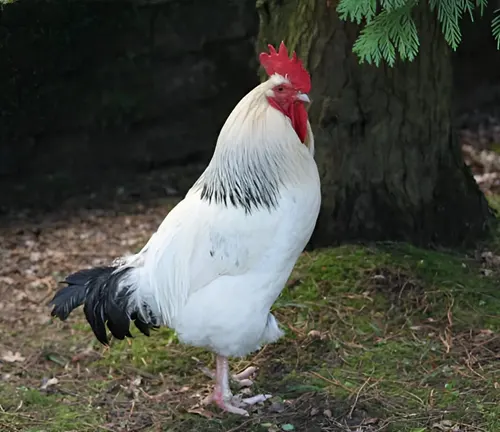
3. Polish Rooster
Polish Roosters, with their distinctive feathered crests, are not just a charming addition to any chicken coop, they are also incredibly functional. Known for their striking appearance, these birds add whimsy and style with their elaborate head feathers that often give them a comical look. However, their value extends beyond aesthetics. Polish Roosters are vigilant and alert, traits that make them excellent at spotting potential threats and deterring predators, ensuring the safety and well-being of the entire flock. Their ability to remain attentive and their quirky looks make them popular among poultry enthusiasts who appreciate both form and function in their coop inhabitants.

4. Rhode Island Red Rooster
Rhode Island Red Roosters are not only robust and assertive, making them excellent guardians for the flock, but they are also highly active and can display aggressive tendencies. This makes them particularly suited for experienced poultry keepers who can manage and channel their strong protective instincts effectively. Additionally, they are valued for their hardiness in various climates and their ability to produce a significant number of eggs, which adds practical value to their presence in any coop. Their rich, red feathers and striking appearance contribute to their popularity among both backyard and commercial poultry enthusiasts.
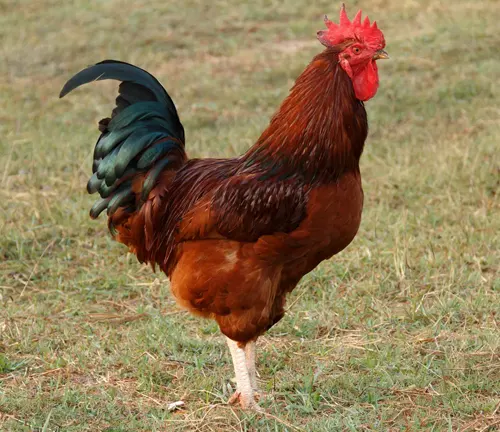
5. Sebright Rooster
Sebright roosters, notable for their small stature and exuberant spirit, are distinguished by their beautifully laced feathers. These birds are territorial yet effective at keeping peace within the flock, making them excellent for maintaining order. Their striking appearance and assertive demeanor appeal to poultry enthusiasts who value both aesthetics and functionality in their coop. The Sebright is ideal for those seeking a breed that combines visual allure with practical benefits.
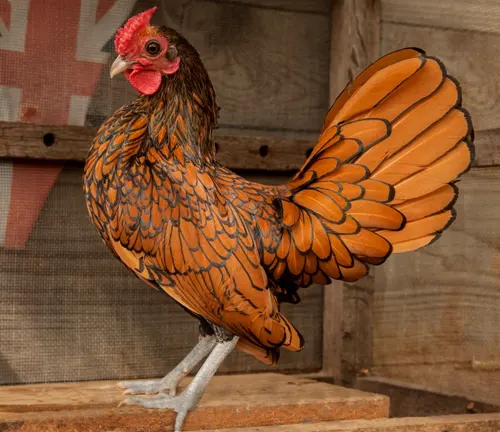
6. Plymouth Rock Rooster
Plymouth Rock roosters are celebrated for their reliable and gentle nature, making them a staple in many chicken coops. They blend seamlessly into flocks, providing protection without excessive aggression. This makes them especially suitable for mixed flocks or novice poultry keepers. Their consistent behavior and sturdy, yet non-confrontational, presence contribute to their longstanding popularity among chicken enthusiasts.
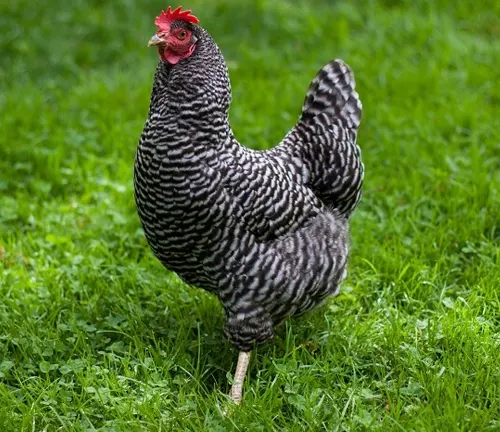
7. Java Rooster
Java roosters, while less commonly known, stand out due to their robust and protective nature. They possess a calm demeanor that makes them highly suitable as pet roosters. This combination of gentle temperament with the capability to guard the flock effectively makes them particularly well-suited for scenarios that require close human interaction without sacrificing the safety of the flock. Their low-profile yet vigilant presence ensures they blend seamlessly into a backyard setting, providing both companionship and protection.
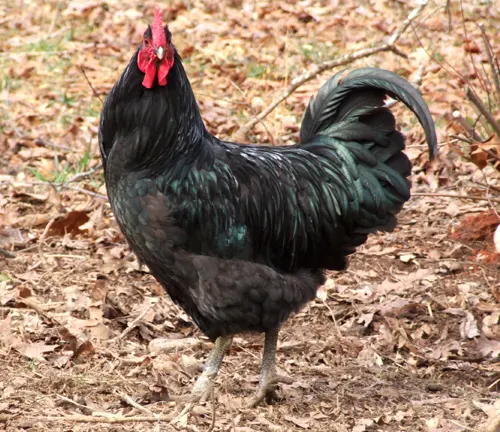
8. Buff Orpington Rooster
Buff Orpington roosters are often celebrated as the “gentle giants” of the poultry world, known for their docile and friendly demeanor. These roosters are especially good around children, making them ideal for family farms. Their calm nature does not detract from their ability to be effective protectors of the flock, making them as functional as they are amiable. Their fluffy, golden feathers not only add a charming aesthetic to any coop but also highlight their approachable personality.
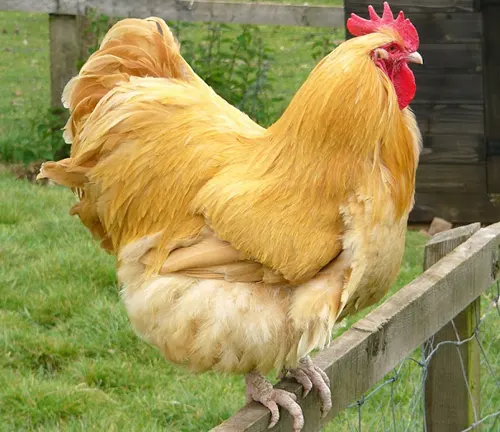
9. Cochin Rooster
Cochin roosters are celebrated not only for their abundant, fluffy plumage but also for their exceptionally calm and friendly temperament. These birds are social, often seeking out human interaction, which makes them particularly good companions, especially in settings with children. Their calm nature means they are less likely to be aggressive towards other chickens, promoting a peaceful coop environment. Moreover, Cochin roosters are quite hardy, adapting well to various climates, though their thick feathers make them especially well-suited for colder weather. Despite their size and impressive appearance, they are not typically known for their prowess as protectors against predators, but their presence can help deter smaller pests.
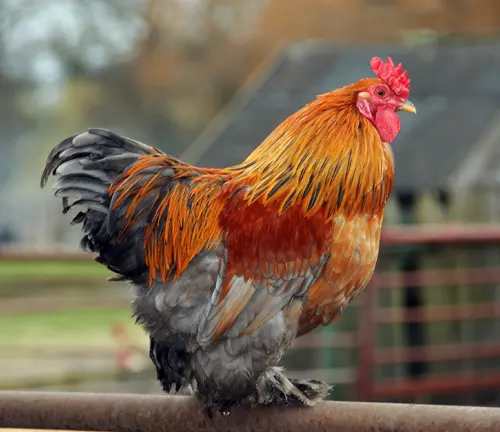
10. Faverolles Rooster
Faverolles roosters are distinctive not only for their physical appearance, which includes unique features like beards and muffs around their faces but also for their particularly gentle disposition. Their calm behavior makes them excellent members of mixed flocks where their non-aggressive nature helps maintain harmony. Faverolles are also known for being hardy in various climates and are good with children, which makes them a favorite among backyard poultry enthusiasts. They contribute to the flock not just with their beauty but by being sociable and easy to handle, which enhances the overall temperament of the group.
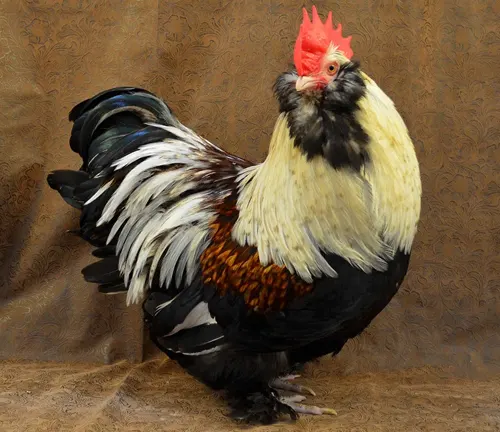
11. Langshan Rooster
Langshan roosters, hailing from China, stand out in any flock due to their impressive height and striking appearance. They are characterized by their upright posture, feathered legs, and glossy feathers, typically in black. Their calm and composed nature makes them excellent additions to any coop seeking to maintain a peaceful environment. Langshan roosters are not known for being aggressive; they tend to avoid conflict rather than provoke it, which makes them well-suited for mixed and docile flocks. This breed is also appreciated for its hardiness in different weather conditions and its role as a reliable protector without the propensity for aggression.
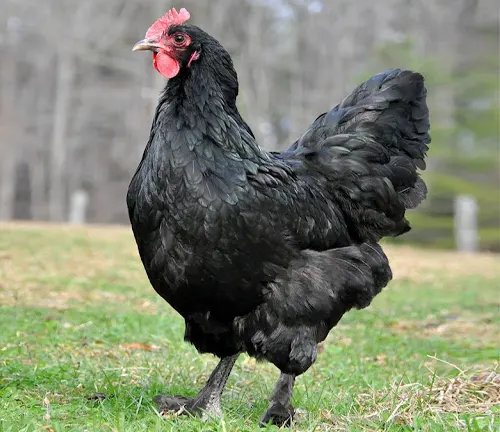
12. Australorp Rooster
Australorp roosters are not only known for their striking black plumage that shimmers with an iridescent sheen but also for their calm and friendly disposition. Originating in Australia, this breed is highly regarded for its prolific egg-laying abilities, making it a favorite among backyard poultry enthusiasts. They are robust and adaptable to various climates, making them suitable for diverse farming setups. Despite their size, Australorp roosters are gentle with both chicks and humans, often seen as protective yet not overly aggressive, making them ideal for families and mixed flocks. Their balanced temperament ensures they safeguard their flock without being a threat to visitors or novice handlers.
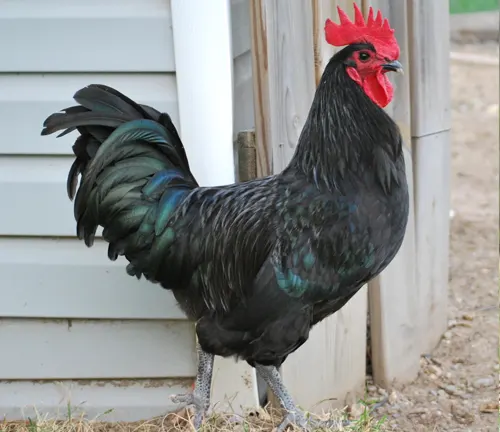
13. Welsummer Rooster
Welsummer roosters are distinguished by their striking partridge coloring, which adds a vivid aesthetic to any flock. These roosters are celebrated not only for their beauty but also for their even-tempered and friendly nature, making them an excellent choice for novice poultry keepers. Welsummers are known for their robust vocalizations, often serving as effective alarm systems when predators are near, yet they handle their role with a calmness that prevents unnecessary disturbances. This combination of protective instincts and approachability makes them particularly well-suited to backyard farms and diverse poultry communities.

14. Barbu d’Uccle Rooster
The Barbu d’Uccle rooster, a small Belgian breed, is renowned for its bravery and distinct appearance. These birds feature a striking combination of a full beard and feathered feet, enhancing their charm and presence in any coop. Despite their diminutive size, Barbu d’Uccle roosters are vigilant guardians, often displaying a watchful nature that belies their quaint appearance. They are particularly valued for their unique aesthetic and spirited personality, making them a favorite among poultry enthusiasts who appreciate both beauty and character in their flock.
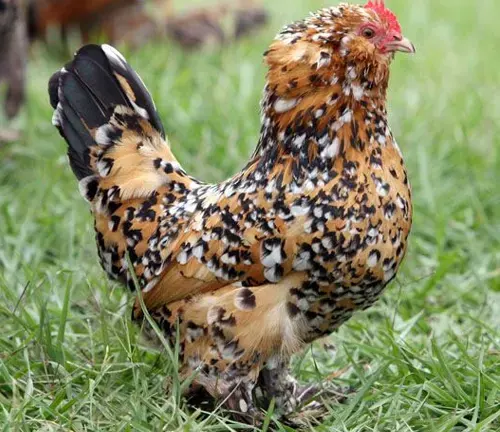
15. Brahma Rooster
The Brahma rooster, one of the largest breeds, is as notable for its size and strength as it is for its gentle demeanor. Despite their imposing appearance, Brahmas are known for their calm and friendly nature, making them excellent protectors of the flock. They are often described as gentle giants within the poultry community and are particularly valued for their ability to keep peace within the coop without resorting to aggression. This combination of traits makes them a popular choice for those looking for a robust yet non-aggressive guardian for their birds.
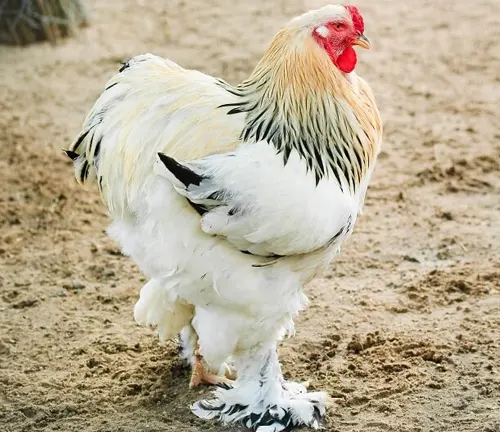
Breeding and Rearing Tips for Roosters
When considering breeding roosters, it’s crucial to understand not just the care of these birds but also the genetics and compatibility between different breeds. Here are some tips and considerations for those looking to breed and rear roosters effectively:
- Understand Breeding Goals: Define what you are breeding for—whether it’s temperament, egg production, meat, or show quality. Each breed has specific traits that are desirable, so choose parent stock that best represents these qualities.
- Genetic Diversity: Avoid inbreeding by ensuring genetic diversity within your flock. This can involve introducing new bloodlines from reputable breeders. Genetic diversity helps in reducing the prevalence of inherited diseases and increases the vitality of the offspring.
- Breeding Compatibility: Not all breeds are compatible for crossbreeding. Crossbreeding can be used to enhance certain traits, but it requires knowledge of genetics to avoid negative outcomes. For example, crossing a heavy breed like a Brahma with a lighter breed like a Leghorn can result in size disparities among offspring, which might affect their viability and growth.
- Timing: Roosters are typically ready to breed at about 4-6 months old, but this can vary depending on the breed. Monitor your roosters for maturity signs before introducing them to hens for breeding.
- Management: Keep breeding birds in optimal health through proper nutrition, housing, and care. Healthy birds are more likely to produce healthy offspring. Ensure that both roosters and hens have enough space, as crowded conditions can lead to stress and aggression.
- Incubation or Brooding: Decide whether you will use a broody hen or an incubator to hatch eggs. Each method has its pros and cons. Broody hens can naturally provide the necessary warmth and turning of eggs, but not all hens are good mothers, and not all rooster breeds are known for broodiness. Incubators offer more control over temperature and humidity, which are crucial for good hatch rates.
- Early Care: Provide newly hatched chicks with a warm environment, starter feed, and clean water. Early care is crucial as chicks are susceptible to illness and environmental stress. Monitor them closely for the first few weeks.
- Record Keeping: Maintain records of breeding pairs, hatch rates, and any health issues. This information is valuable for managing your breeding program and making informed decisions in future breeding cycles.
Breeding roosters and managing their offspring requires a blend of knowledge about the breeds involved, careful planning, and attentive care. For anyone new to chicken breeding, it might also be helpful to consult with experienced breeders or join local poultry clubs for support and advice.
Conclusion
Each of these breeds brings something unique to the table, from the Silkie’s cuddly nature to the Brahma’s imposing presence. When choosing a rooster, consider not just the looks but the temperament and the role you expect it to play in your coop. Whether you need a fierce protector, a gentle giant, or a striking showpiece, there’s a rooster breed to meet your needs.
FAQs
- How do I integrate a new rooster into my flock?
Introducing a new rooster to your flock requires patience and careful management to avoid conflicts. Start by keeping the new rooster separated but visible to the other chickens to allow them to get accustomed to each other without direct contact. Gradually allow supervised interactions in neutral areas until the flock seems to accept the new member. - How can I manage aggressive behavior in roosters?
Dealing with aggressive roosters involves several strategies:- Isolation: Temporarily separating the aggressive rooster can help.
- Re-training: Handling the rooster more frequently can sometimes reduce aggression as it becomes more accustomed to human contact.
- Environmental Enrichment: Providing more space and stimulating environments can help reduce boredom-induced aggression.
- Professional Advice: In extreme cases, consulting with a vet or an animal behaviorist might be necessary.
- What are the legal considerations for keeping roosters in urban areas?
Many urban areas have specific ordinances regarding the keeping of roosters due to noise concerns. It’s important to:- Check Local Laws: Some cities ban roosters, while others may have restrictions on the number of animals or specific requirements for their enclosures.
- Consider Neighbors: Even if roosters are legal, keeping them in urban or suburban settings can lead to noise complaints. Soundproofing chicken coops and maintaining good relationships with neighbors can be crucial.
- Permits: Some locales might require special permits to keep poultry, so contacting the local government for exact regulations is advised.
We’d love to hear about your experiences and thoughts on these rooster breeds! Which one do you have in your coop, or which are you considering? Drop your comments below and share your stories and tips with fellow poultry enthusiasts. Don’t forget to share this article with friends who might find it helpful too!

Edward Smith
Forestry AuthorWoodworking is about more than crafting; it's a harmonious connection with nature, mastering tools, and preserving our environment. I'm here to share my knowledge and experiences with you, forging a future where we can embrace wood's beauty and utility while safeguarding our forests' health and diversity.













Leave your comment